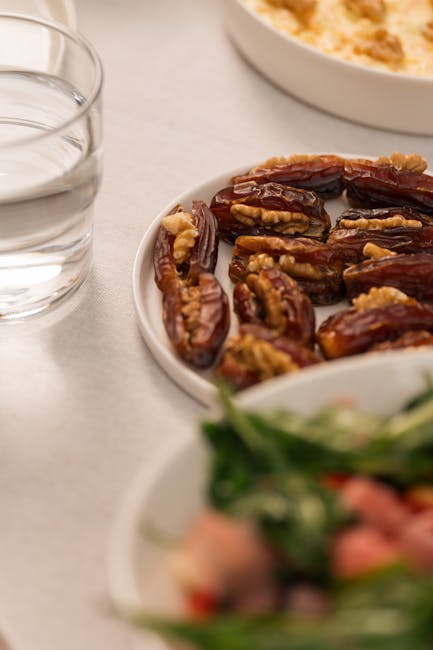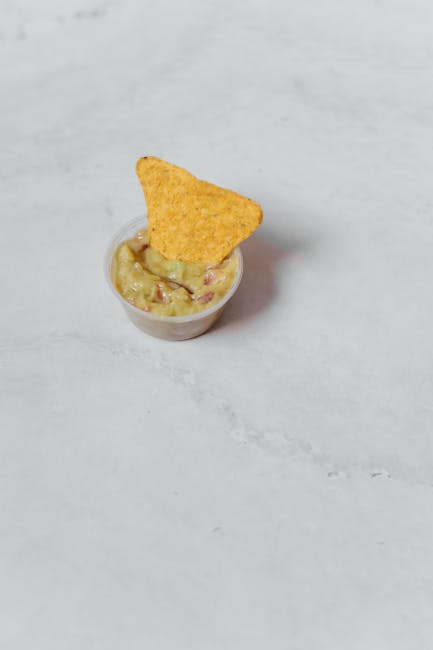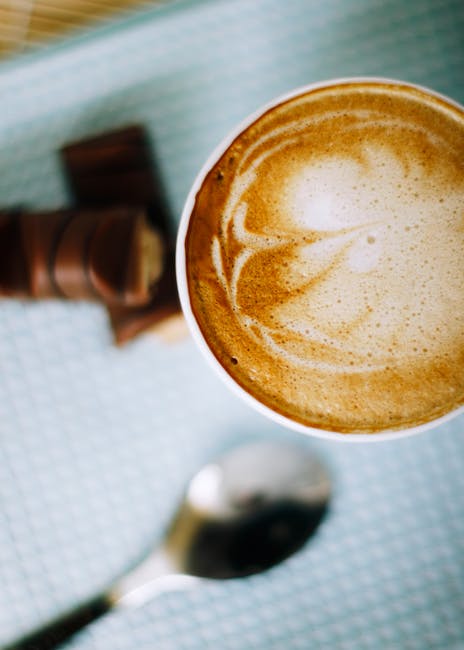The vibrant and flavorful Perfect Mediterranean Chickpea Salad is a testament to the culinary richness of the Mediterranean region, a cradle of civilization and gastronomic innovation. While pinpointing a single origin is impossible, its core components – chickpeas, olive oil, herbs, and lemon – have been integral to Mediterranean diets for millennia. Chickpeas, or garbanzo beans, have been cultivated in the region for over 7,000 years, their presence documented in archaeological sites across the Levant and beyond. Their nutritional value, providing a significant source of protein and fiber, made them a staple food, particularly for populations with limited access to meat. The use of olive oil, another cornerstone of the Mediterranean diet, adds not only flavor but also a significant dose of healthy monounsaturated fats, contributing to the region’s famously low rates of heart disease. Studies have shown that populations adhering to the Mediterranean diet have lower risks of chronic diseases compared to populations consuming other diets.
The history of chickpea salads, specifically, is less documented than the individual ingredients. However, the concept of combining legumes with vegetables, herbs, and a flavorful dressing is deeply rooted in Mediterranean culinary traditions. Think of the countless variations of panzanella in Italy, or the numerous chickpea-based salads found across North Africa and the Middle East. These dishes often showcase seasonal ingredients, reflecting the agricultural cycles and local flavors of specific regions. The Perfect Mediterranean Chickpea Salad – as a specific recipe – is likely a modern interpretation, drawing inspiration from these diverse culinary traditions and adapting them to contemporary tastes. It represents a convergence of ancient techniques and modern sensibilities, highlighting the enduring appeal of simple, fresh, and healthy ingredients.
Beyond its nutritional benefits and delicious taste, the Perfect Mediterranean Chickpea Salad holds cultural significance. It represents a connection to the rich history and traditions of the Mediterranean, a region renowned for its emphasis on fresh, seasonal produce and communal dining. The salad’s simplicity belies its depth; it embodies the spirit of Mediterranean cuisine, focusing on quality ingredients rather than complex techniques. Moreover, chickpeas, a relatively inexpensive and widely available legume, make this salad accessible to a broad range of people, reflecting a commitment to both culinary excellence and social equity. This makes it an ideal dish for sharing, fostering connections between people through the simple pleasure of a delicious and healthy meal. The sharing of food, a fundamental aspect of Mediterranean culture, is further enhanced by the versatility of the salad; it can be enjoyed as a light lunch, a side dish, or even a component of a larger meal, adapting to various occasions and preferences.
Ingredients and Measurements
This recipe for Perfect Mediterranean Chickpea Salad yields approximately 4 servings. Accurate measurements are crucial for achieving the perfect balance of flavors and textures. We recommend using a kitchen scale for the most precise results, particularly for the chickpeas and vegetables. However, volume measurements are provided as alternatives.
Chickpeas: The star of the show! We’ll be using 1 ½ cups (200g) of cooked chickpeas. You can use canned chickpeas, but rinse them thoroughly under cold water to remove excess sodium and starch. This will prevent your salad from becoming overly mushy. If using dried chickpeas, be sure to cook them until tender but not falling apart. Approximately 1 cup (170g) of dried chickpeas will yield about 2 cups (280g) of cooked chickpeas, so adjust accordingly.
Cucumber: One medium-sized cucumber (approximately 1 cup diced, about 150g) provides refreshing crunch. Choose a firm cucumber with vibrant green skin for the best flavor and texture. Peel and seed the cucumber if desired, but leaving the peel on adds nutrients and a slightly bitter, earthy note that complements the other ingredients.
Red Onion: A small red onion (approximately ½ cup finely chopped, about 60g) adds a delightful sharpness and vibrant color. Finely chop the red onion to prevent overpowering the other flavors. Soaking the chopped onion in cold water for 10-15 minutes before adding it to the salad can help mitigate any strong onion bite.
Bell Pepper: One medium bell pepper (approximately 1 cup diced, about 150g), preferably red or yellow, contributes sweetness and a beautiful visual appeal. Choose a bell pepper that is firm and brightly colored for the best flavor and visual impact. Remove the seeds and membrane before dicing.
Cherry Tomatoes: One cup (about 150g) of halved cherry tomatoes adds bursts of juicy sweetness and acidity. Use ripe, brightly colored cherry tomatoes for the most flavor. Avoid tomatoes that are bruised or soft.
Fresh Herbs: Fresh herbs are essential for the authentic Mediterranean flavor profile. We recommend using 2 tablespoons (about 4g) of finely chopped fresh parsley, 1 tablespoon (about 2g) of finely chopped fresh mint, and 1 tablespoon (about 2g) of finely chopped fresh dill. Don’t skimp on the herbs! Their fresh, vibrant flavors elevate the entire salad.
Lemon Juice: 2 tablespoons (about 30ml) of fresh lemon juice adds brightness and acidity, balancing the richness of the other ingredients. Use freshly squeezed lemon juice for the best flavor. Avoid bottled lemon juice as it often contains preservatives.
Olive Oil: 3 tablespoons (about 45ml) of high-quality extra virgin olive oil adds richness and healthy fats. Use a good quality extra virgin olive oil as it will significantly impact the flavor of the salad.
Seasoning: Salt and freshly ground black pepper to taste. Start with ½ teaspoon of salt and ¼ teaspoon of black pepper and adjust according to your preference. Taste and adjust seasoning before serving, as the saltiness can vary depending on the chickpeas used.
Equipment List
Preparing the perfect Mediterranean Chickpea Salad requires the right tools to ensure efficient and consistent results. While some items might seem optional, using the recommended equipment will significantly enhance your culinary experience and the final quality of your salad. This list details the essential and recommended equipment, along with explanations to guide your choices.
Essential Equipment:
1. Two large mixing bowls (at least 5-quart capacity each): One bowl will be used for preparing the chickpea mixture, while the second will be crucial for combining all the ingredients. Larger bowls provide ample space for thorough mixing and prevent spills. Stainless steel or glass bowls are ideal as they are durable and easy to clean. Avoid using reactive metals like aluminum, which can affect the taste and color of your salad.
2. Measuring cups and spoons: Precise measurements are key to achieving the perfect balance of flavors in your Mediterranean Chickpea Salad. Invest in a reliable set of measuring cups (1 cup, ½ cup, ⅓ cup, ¼ cup) and spoons (1 tablespoon, 1 teaspoon, ½ teaspoon) to ensure accuracy. Using a kitchen scale is highly recommended for more precise measurements, especially for ingredients like chickpeas and feta cheese.
3. Chef’s knife (8-inch): A sharp chef’s knife is essential for efficiently chopping vegetables like cucumbers, tomatoes, red onion, and bell peppers. A dull knife will bruise the vegetables, leading to a less appealing texture and potentially affecting the flavor. Regular sharpening of your knife is crucial for both safety and optimal performance.
4. Cutting board: Choose a sturdy cutting board made of wood, plastic, or bamboo. Avoid using glass cutting boards as they can dull your knives quickly. Having separate cutting boards for vegetables and meats is a good hygiene practice.
5. Fork or Potato Masher (Optional but Recommended): While you can certainly leave the chickpeas whole, gently mashing some of them with a fork or potato masher adds a delightful textural contrast to the salad. A potato masher is particularly effective for achieving a partially mashed consistency.
Recommended Equipment:
1. Food processor (Optional): While not strictly necessary, a food processor can significantly speed up the preparation process by quickly chopping vegetables. However, be mindful not to over-process the vegetables, as this can lead to a mushy texture. If you use a food processor, pulse the ingredients briefly rather than processing continuously.
2. Large serving bowl: A visually appealing serving bowl will enhance the presentation of your Mediterranean Chickpea Salad. Choose a bowl that complements your table setting and is large enough to comfortably hold the entire salad.
3. Citrus juicer (Optional): If you are adding fresh lemon juice, a citrus juicer will help extract the maximum amount of juice efficiently. Alternatively, you can manually juice the lemon using a fork and a strainer.
4. Measuring spoons for spices: While standard measuring spoons suffice, dedicated measuring spoons specifically for spices allow for more accurate measurements of smaller quantities, resulting in more balanced flavor profiles.
By assembling this equipment list beforehand, you’ll ensure a smooth and enjoyable process in creating your perfect Mediterranean Chickpea Salad.
Preparation of Ingredients (Chopping, Washing etc.)
Before you begin assembling your Perfect Mediterranean Chickpea Salad, meticulous preparation of the ingredients is key to achieving the optimal flavor and texture. This section details the precise steps to ensure your salad is a culinary masterpiece.
Washing and Cleaning: Begin by thoroughly washing all your produce under cold running water. This removes any dirt, pesticides, or other unwanted substances. For leafy greens like cucumber and red onion, consider soaking them in a bowl of cold water with a splash of white vinegar for about 10 minutes. This helps to remove any lingering dirt and will also help to keep the leaves crisp and bright. Thorough washing is crucial for food safety.
Chickpeas: If using canned chickpeas, drain them completely in a fine-mesh sieve. Rinse them under cold water to remove any excess canning liquid. If you prefer using dried chickpeas, you’ll need to soak them overnight in plenty of cold water (at least double the volume of the chickpeas). Then, boil them until tender (about 45-60 minutes). Once cooked, drain and rinse thoroughly before adding to the salad. Properly drained chickpeas prevent a watery salad.
Cucumber: Wash one large cucumber thoroughly. Peel it if desired, or leave the skin on for added nutrients and texture. Then, slice it into half-moons approximately ¼ inch thick. Avoid overly thin slices as they can become mushy.
Red Onion: Wash one medium red onion. To mitigate strong onion flavor, consider soaking the sliced onion in cold water for 10-15 minutes after chopping. This will help to mellow the sharpness. Then, thinly slice the onion into half-moons, aiming for similarly sized pieces to the cucumber. Consistent slicing ensures even cooking and distribution of flavors.
Bell Peppers: Wash one large bell pepper (any color you prefer). Remove the stem, seeds, and membranes. Chop the pepper into ½-inch dice. Use a sharp knife for clean, even cuts.
Tomatoes: Wash 1 pint of cherry or grape tomatoes. If using larger tomatoes, chop them into bite-sized pieces. Avoid over-chopping the tomatoes, as they can release excess juice.
Fresh Herbs: Wash a generous handful (approximately ½ cup) of fresh parsley and/or mint. Roughly chop the herbs. Avoid over-chopping the herbs, as this can bruise them and diminish their flavor.
Feta Cheese: Crumble 4 ounces of feta cheese into bite-sized pieces. Don’t crumble the feta too finely; larger pieces provide a pleasant textural contrast.
Optional additions: If incorporating olives (½ cup Kalamata olives, pitted and halved), artichoke hearts (1/2 cup, quartered), or other vegetables, remember to wash and prepare them according to their individual requirements, ensuring they are all similarly sized for even cooking and presentation. Careful preparation of all ingredients will elevate the overall quality of your salad.
Chickpea Preparation (Cooking or Draining Canned)
The foundation of a perfect Mediterranean chickpea salad lies in perfectly prepared chickpeas. Whether you opt for the convenience of canned chickpeas or the satisfying process of cooking them from dry, the method significantly impacts the final texture and flavor of your salad. Let’s explore both options.
Using Canned Chickpeas: This is the quickest and easiest route. Start with two 15-ounce cans of chickpeas. Thoroughly rinse the chickpeas under cold water. This crucial step removes excess sodium and the starchy coating that can make the chickpeas taste gummy and less vibrant. Rinse them in a fine-mesh sieve for at least 30 seconds, agitating gently to ensure all the excess liquid is gone. You can even give them a quick scrub with your hands to remove any particularly stubborn bits of skin. Once rinsed, drain them completely. Avoid using the liquid from the can, as it can make your salad watery.
Cooking Chickpeas from Dry: For a deeper, richer chickpea flavor, cooking from dry is the preferred method by many. Start with 1 cup of dried chickpeas. Before cooking, soak the chickpeas overnight (or for at least 8 hours) in plenty of cold water. This step drastically reduces cooking time and improves their texture. After soaking, drain the chickpeas and rinse them thoroughly. Place the chickpeas in a large pot and cover them with about 4 cups of fresh water. Add a generous pinch of salt (approximately 1 teaspoon). Bring the water to a boil, then reduce the heat to low, cover, and simmer for 60-90 minutes, or until the chickpeas are tender but not mushy. Check for doneness by gently pressing a chickpea; it should be easily mashed with a fork. If they need more time, continue simmering until tender. Once cooked, drain the chickpeas completely.
Important Considerations for Both Methods: Regardless of whether you use canned or dried chickpeas, proper draining is paramount. Excess moisture will dilute the flavors of your dressing and make your salad soggy. If you’re concerned about the chickpeas being too firm after cooking or draining, you can gently mash a few of them with a fork to create a slightly creamier texture. However, avoid over-mashing, as you want to retain some of the chickpeas’ shape and integrity for the salad’s texture. For a truly elevated Mediterranean Chickpea Salad, consider lightly toasting the chickpeas in a dry pan after draining. This adds a subtle nutty flavor and enhances their overall appeal. Just be careful not to burn them; cook them over medium-low heat, stirring frequently, until lightly browned.
Professional Tip: For the best results, use high-quality chickpeas. Look for brands that emphasize their sourcing and processing methods. The flavor difference between good quality chickpeas and less-than-ideal ones is noticeable in the final dish. Remember, the preparation of your chickpeas is a cornerstone of this recipe, so take your time and follow these steps for flawlessly delicious Mediterranean Chickpea Salad!
Dressing Preparation
The success of a Mediterranean Chickpea Salad hinges significantly on the quality of its dressing. A well-balanced dressing will elevate the flavors of the chickpeas, vegetables, and herbs, creating a harmonious and delicious salad. This section details the preparation of a bright, lemony, and herbaceous dressing that perfectly complements the other ingredients.
We’ll be making a classic vinaigrette, which is a simple emulsion of oil and acid. The key to a good vinaigrette is achieving a balance between the oil and the acid, and incorporating enough flavor elements to make it truly sing. For this recipe, we’ll be using extra virgin olive oil for its fruity flavor and health benefits. Always use a good quality olive oil, as it will significantly impact the final taste of your salad.
Ingredients for the Dressing:
- 1/4 cup extra virgin olive oil
- 3 tablespoons fresh lemon juice (approximately 1 large lemon)
- 1 tablespoon red wine vinegar
- 1 small clove garlic, minced
- 1 teaspoon Dijon mustard
- 1/2 teaspoon dried oregano
- 1/4 teaspoon salt
- 1/4 teaspoon black pepper
- Optional: 1 tablespoon chopped fresh parsley or dill for extra freshness and visual appeal.
Instructions:
Begin by whisking together the lemon juice, red wine vinegar, minced garlic, Dijon mustard, oregano, salt, and pepper in a small bowl. Ensure the garlic is finely minced to avoid large chunks in the dressing. Whisking these ingredients first helps to emulsify the dressing and distribute the flavors evenly before adding the oil.
Slowly drizzle in the extra virgin olive oil while continuously whisking. Whisking vigorously and steadily is crucial for creating a smooth emulsion. If you add the oil too quickly, the dressing may separate. Continue whisking until the dressing is emulsified and slightly thickened. The emulsion is crucial for the dressing to coat the salad ingredients properly.
Once the dressing is emulsified, taste and adjust the seasoning as needed. You might want to add a pinch more salt, pepper, or lemon juice depending on your preference. Taste testing is paramount; it allows you to personalize the dressing to your liking.
If using fresh herbs, gently stir them into the dressing. Add the herbs at the end to preserve their vibrant color and fresh flavor.
The dressing can be made ahead of time and stored in an airtight container in the refrigerator for up to 3 days. Allow the dressing to come to room temperature before dressing the salad for optimal flavor and consistency. This will prevent the cold dressing from shocking the other ingredients and potentially making them taste less vibrant.
Combining Ingredients
This section details the crucial step of combining all the ingredients for your Perfect Mediterranean Chickpea Salad. The order in which you add ingredients, and the technique you use, directly impacts the final texture and flavor of your salad. Careful attention to this stage ensures a delicious and satisfying result.
Begin by preparing all your ingredients. This includes cooking the chickpeas (if using dried), chopping the vegetables, and measuring out the dressings. Having everything prepped beforehand significantly streamlines the combining process and prevents delays. We recommend using a large bowl, at least 4-quart capacity, to accommodate all the ingredients comfortably.
First, add the cooked chickpeas to the bowl. For this recipe, we use 2 (15-ounce) cans of chickpeas, drained and rinsed thoroughly. Rinsing is crucial to remove excess starch and achieve a lighter, more refreshing salad. If using homemade chickpeas, ensure they are completely cooled before adding them to the bowl.
Next, incorporate the chopped vegetables. This recipe calls for 1 cup of finely chopped cucumber, ½ cup of finely chopped red onion, and ½ cup of chopped Kalamata olives. The finer the chop, the more evenly the flavors will distribute throughout the salad. Avoid over-chopping, however, as this can lead to a mushy texture. Add the vegetables to the chickpeas and gently toss to combine.
Now, it’s time to add the herbs. Fresh herbs offer the brightest and most vibrant flavors. Add ⅓ cup of chopped fresh parsley, 2 tablespoons of chopped fresh mint, and 1 tablespoon of chopped fresh dill. Gently fold the herbs into the chickpea and vegetable mixture. Avoid vigorous stirring, as this can bruise the herbs and release unwanted bitterness.
The final step involves incorporating the dressing. For this Perfect Mediterranean Chickpea Salad, we use a simple yet flavorful lemon-herb vinaigrette. Add ⅓ cup of extra virgin olive oil, ¼ cup of fresh lemon juice, 1 tablespoon of red wine vinegar, 1 teaspoon of Dijon mustard, ½ teaspoon of dried oregano, ½ teaspoon of salt, and ¼ teaspoon of black pepper. Whisk these ingredients together in a small bowl before adding them to the salad. This ensures the dressing is emulsified and coats the ingredients evenly.
Gently toss the salad to combine all the ingredients thoroughly, ensuring that every chickpea and vegetable is coated in the dressing. Avoid over-mixing, which can break down the vegetables and lead to a less appealing texture. Taste the salad and adjust the seasoning as needed, adding more lemon juice, salt, or pepper to your preference.
Once everything is well combined, cover the bowl and refrigerate for at least 30 minutes before serving. This allows the flavors to meld and deepen, resulting in a more complex and delicious salad. You can refrigerate for up to 2 days. Enjoy your Perfect Mediterranean Chickpea Salad!
Recommendations for Perfect Mediterranean Chickpea Salad
This Perfect Mediterranean Chickpea Salad is a versatile and healthy dish, perfect for lunch, a light dinner, or a flavorful addition to a larger spread. To maximize enjoyment and nutritional benefits, we offer the following recommendations:
Serving Suggestions: This chickpea salad is incredibly adaptable. Enjoy it as a simple standalone dish, scooped up with pita bread, crackers, or crudités (like carrot sticks, cucumber slices, and bell pepper strips). It also makes a fantastic filling for wraps, sandwiches, or stuffed tomatoes and peppers. For a more substantial meal, serve it alongside a bed of fresh greens or as a topping for grilled chicken or fish. Consider adding a dollop of plain Greek yogurt or a drizzle of tahini for extra creaminess and flavor.
Storage Conditions: For optimal freshness and flavor, store leftover Perfect Mediterranean Chickpea Salad in an airtight container in the refrigerator. It will keep well for 3-4 days. We recommend consuming it within this timeframe to maintain its vibrant taste and texture. Avoid freezing this salad, as the chickpeas may become mushy upon thawing.
Complementary Dishes: The bright, Mediterranean flavors of this salad pair beautifully with a variety of dishes. Consider serving it alongside a simple Greek salad with feta cheese and Kalamata olives, or a vibrant tabbouleh for a refreshing contrast. It also complements grilled meats and seafood exceptionally well, adding a healthy and flavorful counterpoint to richer proteins. For a complete meal, serve it with a side of crusty bread, hummus, and a light vinaigrette. The possibilities are endless!
Nutritional Information (per serving, approximate): The exact nutritional content will vary slightly depending on the specific ingredients and portion size. However, a typical serving (approximately 1 cup) of this Perfect Mediterranean Chickpea Salad provides approximately: 250-300 calories, 15-20g protein, 30-40g carbohydrates, and 10-15g fat. It’s a good source of fiber, iron, and various vitamins and minerals. Please note: this is an estimate and may vary. For precise nutritional information, use a nutrition calculator with your specific ingredients and quantities.
Enhancements and Variations: Feel free to experiment with different herbs and spices to customize the flavor profile. Adding a pinch of red pepper flakes can introduce a pleasant kick, while a squeeze of lemon juice will enhance the brightness of the salad. Consider adding chopped sun-dried tomatoes, artichoke hearts, or crumbled feta cheese for added texture and flavor. If you prefer a creamier texture, add a tablespoon or two of mayonnaise or Greek yogurt. Remember to adjust seasonings to your liking.
Enjoy! This Perfect Mediterranean Chickpea Salad is a delicious and healthy option that’s sure to become a staple in your kitchen. We encourage you to experiment with different variations and share your creations with friends and family.





